Detailed painting steps of Five-colored lotus in Gongbi style!
Baihe Pavilion
1、Light ink outlines flower heads, medium ink hooks lotus pods, lotus stems, and aquatic plants. The ink thread outlines dewdrops. The root of the main leaf line should be slightly thicker, and the thread used should be firm, powerful, smooth, and natural. The overall lines of the lotus leaf's outer contour are slightly thicker, close to iron line drawing, but attention should be paid to large turning and fluctuating changes. The thread used for water plants needs to have a rhythmic and graceful movement, creating emotions through swaying. The thread used in the flower head should be gentle and winding, with needles hidden in the cotton.
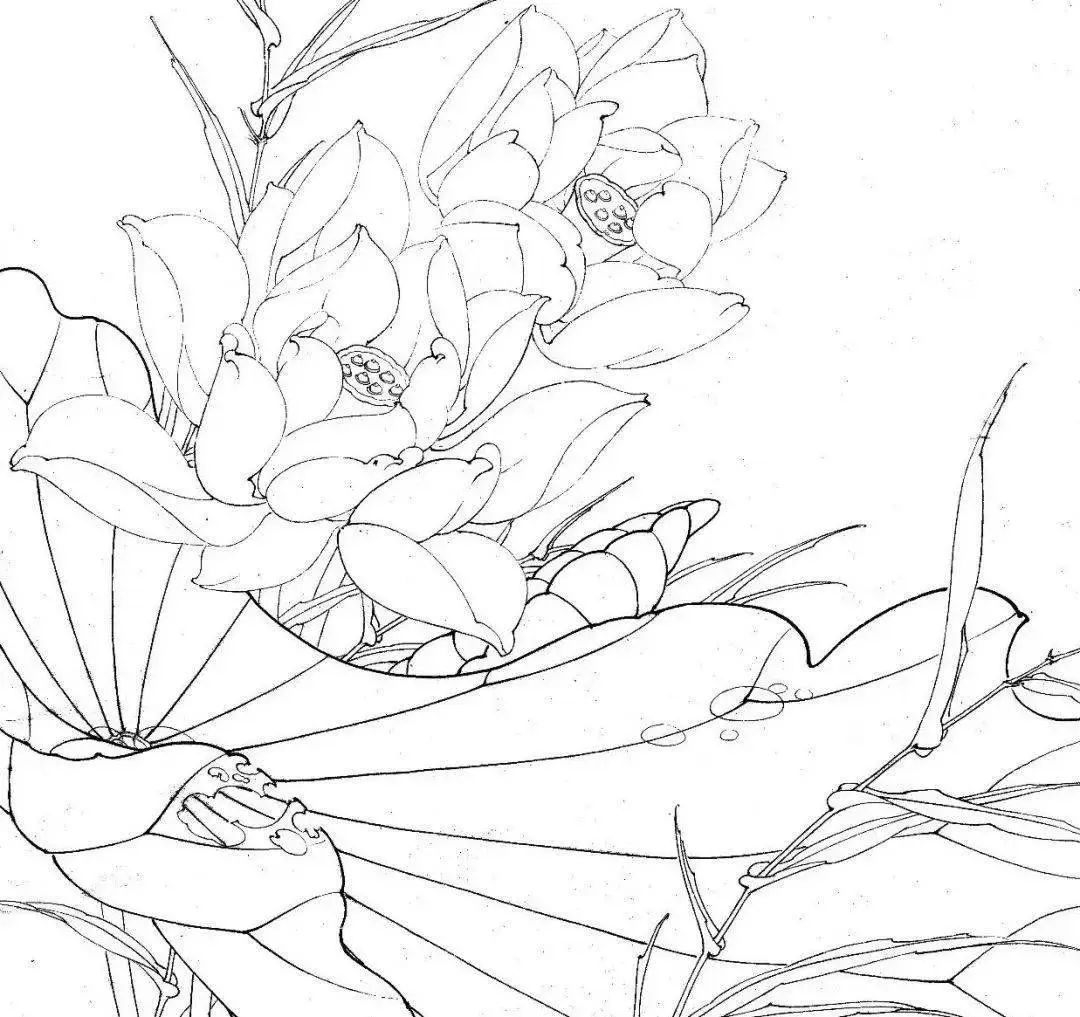
2、Coat the flower head with light white powder. Water plants and lotus pods should be coated with a light yellow gray green color (three green+rattan yellow+light ink). Coat the leaves with a greenish green color (grass green+a little bit of phthalocyanine blue). Apply a greenish gray color (three shades of green, a little ink, and white) to the anti leaf flat. Use extremely light ink to dye the background from bottom to top as a whole. Be patient with multiple layers of coloring and do not rush to complete it all at once.
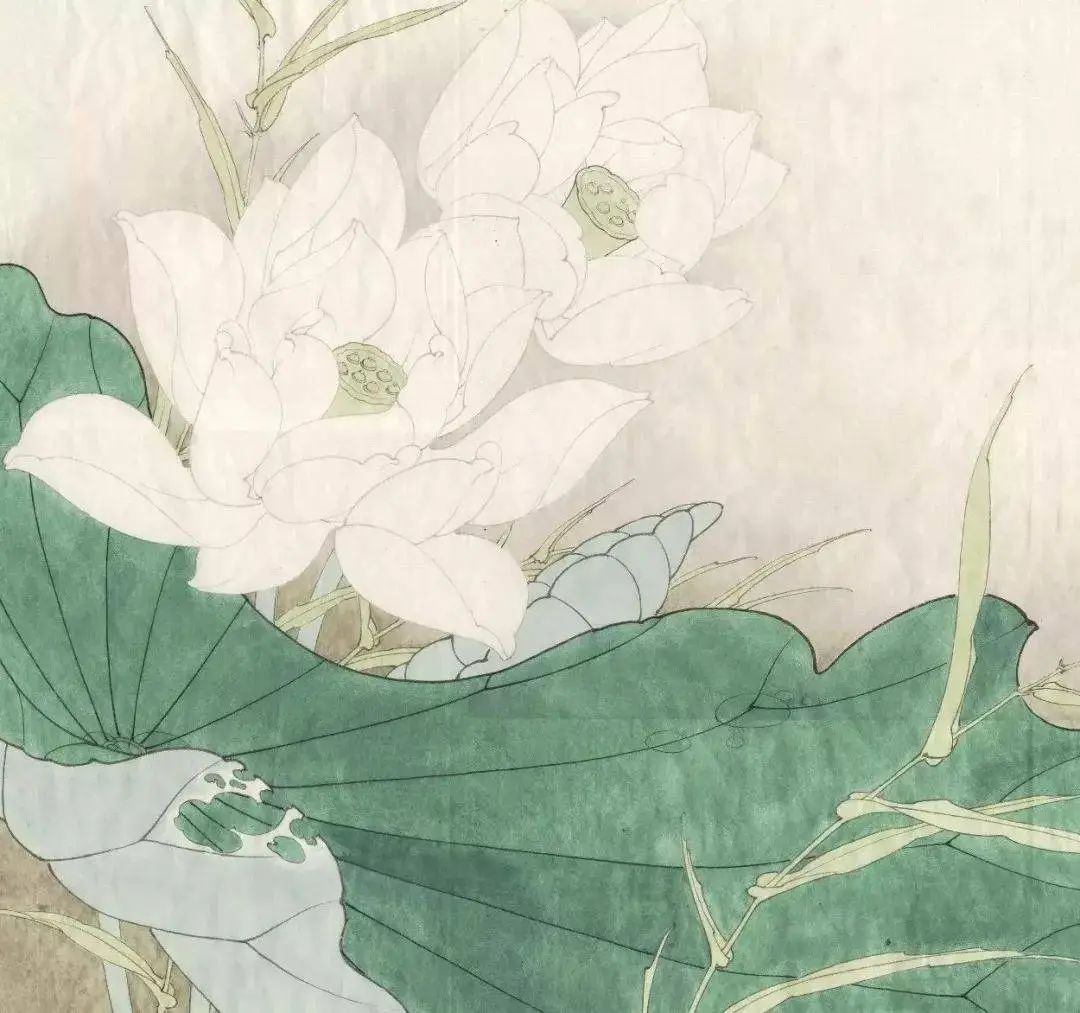
3、The flower head is first dyed with light yellow green (rattan yellow+phthalocyanine blue+a little emerald green), and then dyed separately with light emerald green (phthalocyanine blue+rattan yellow+a little emerald green). Water grass is dyed in light dark green (grass green+a little ink), with the main tendon leaving a water line.
Continue to dye the background with light ink, and around the flower head, you can use light ink cyan (flower green+ink) to create a light color from the flower head outwards. You should drag the color out and avoid a too obvious feeling of hard contrast to the flower head. Lotus pods are dyed with emerald green.
The main leaves are dyed with indigo, and water lines are left on both sides of the main veins. The dewdrops are also dyed with indigo, and the leaves around the dewdrops are slightly darker to highlight the transparency of the dewdrops. Use grass green to separate and dye the leaves.
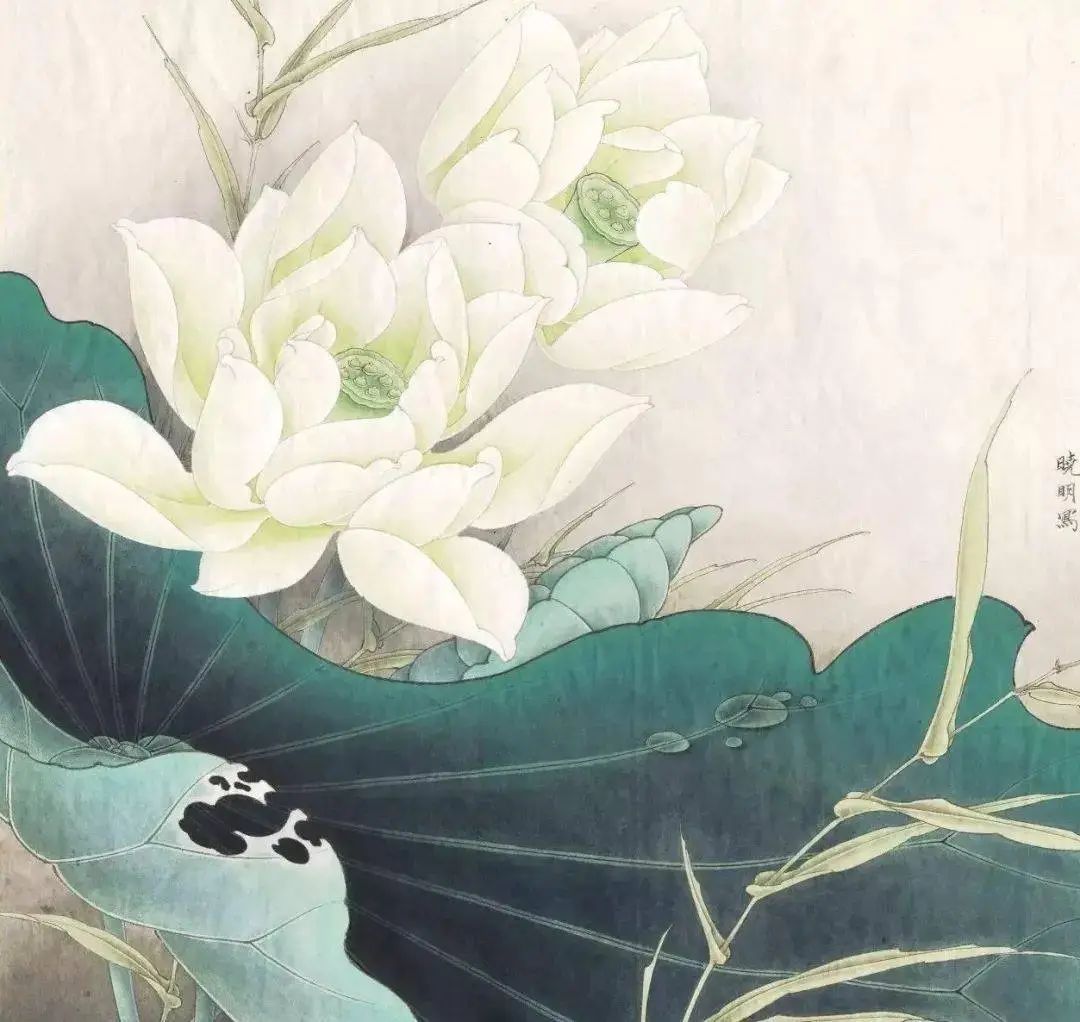
4、After dyeing the flower head with white powder to brighten the surface, use extremely light eosin to slightly dye the tip, then use light eosin to locally tie the tip, and finally use a light emerald green fine brush to outline the flower veins.
After dyeing the anti leaf cover with light three green, the edge is dyed again with light orange yellow (rattan yellow+vermilion), and the insect eroded part is dyed with ochre ink while wet, to see the brushstrokes. The water grass is covered with a light orange yellow color (rattan yellow+vermilion) from the tip to the root, up to half of the area, and then the tip of the water grass is partially covered with a thick orange yellow color.
After dyeing the root of the main leaf with dark blue, use head green to dye from the bright part to the root, and finally apply a layer of light emerald green (phthalocyanine blue+rattan yellow+a little emerald green) on the entire leaf surface. After brightening the reflective part of dewdrops with triple green, carefully draw the highlights with white powder to highlight the transparency.
After the light ink hooks the silk thread, the thick orange yellow is slightly displaced and tightened, and then the stamen is dotted with thick white powder, and the center of the extremely light rouge stamen is dotted again.
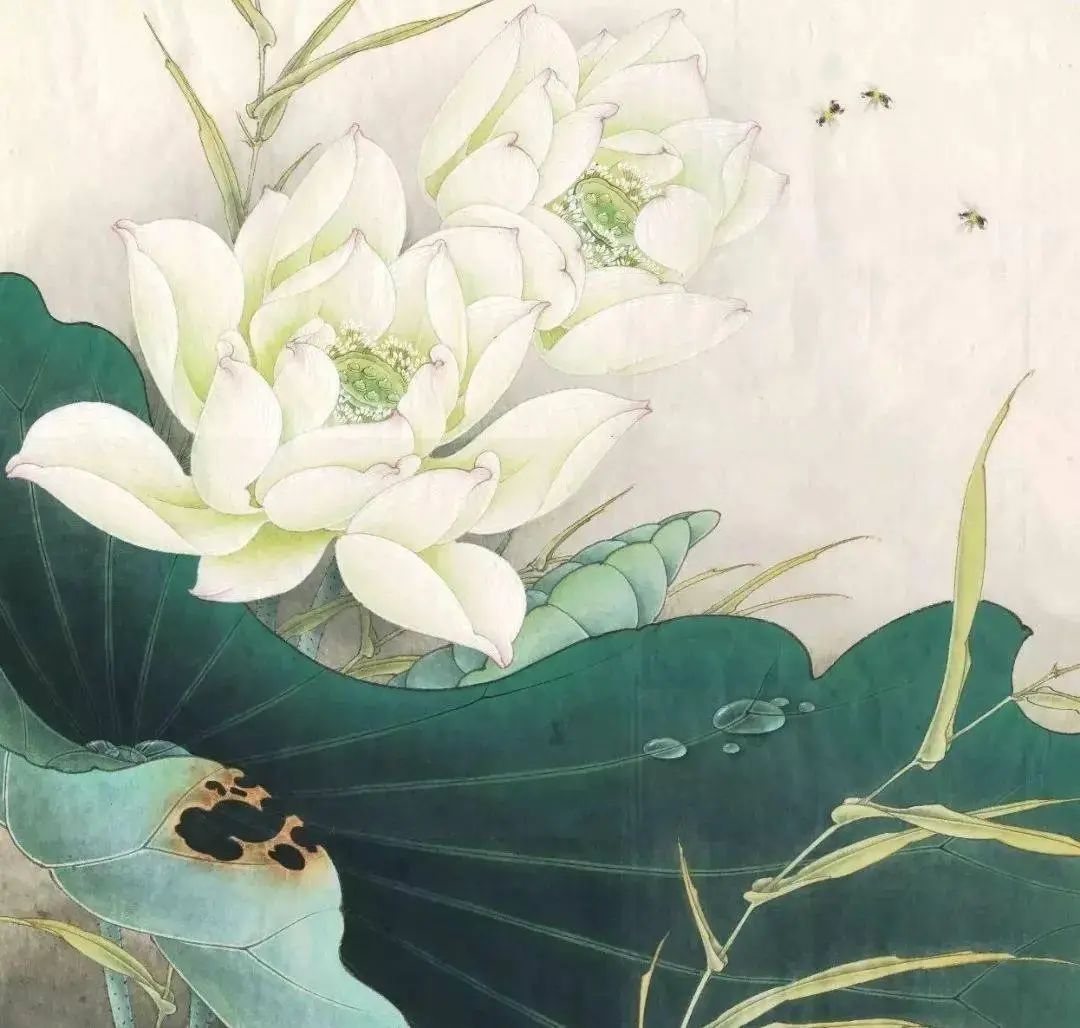
Red lotus, sunny day
1、Heavy ink outlines the flower head, thick ink outlines the main leaves, and medium ink outlines the branches and stems of aquatic plants. Due to the heavy color of the flower head, the lines should be solemn and firm, and can also be slightly thicker without deliberately pursuing lightness and agility. Leaves are mainly depicted with straight lines, similar to iron lines.
The lines used in aquatic plants need to be agile and flying, especially the thickness of the lines on the leaves of aquatic plants should be natural and reasonable, and the stem part should highlight the strong feeling of the nodes and bones.
2、Apply a medium concentration of red fat evenly on the flower head, and if it is uneven, apply it again. Apply light pink orange yellow (rattan yellow+vermilion fat+white) to the lotus seed. The background (which can be dyed together with water plants) should be baked multiple times with light ink, light on top and deep on the bottom. Stain the main leaves with light ink, leaving the leaf veins unstained.
The reverse leaves are dyed with clear ink, and the brightness is higher than that of the main leaves. The lotus stem is dyed separately with light ink using the "dyeing height method", and the entire part near the flower head is dyed together to create a light and dark relationship due to shading.
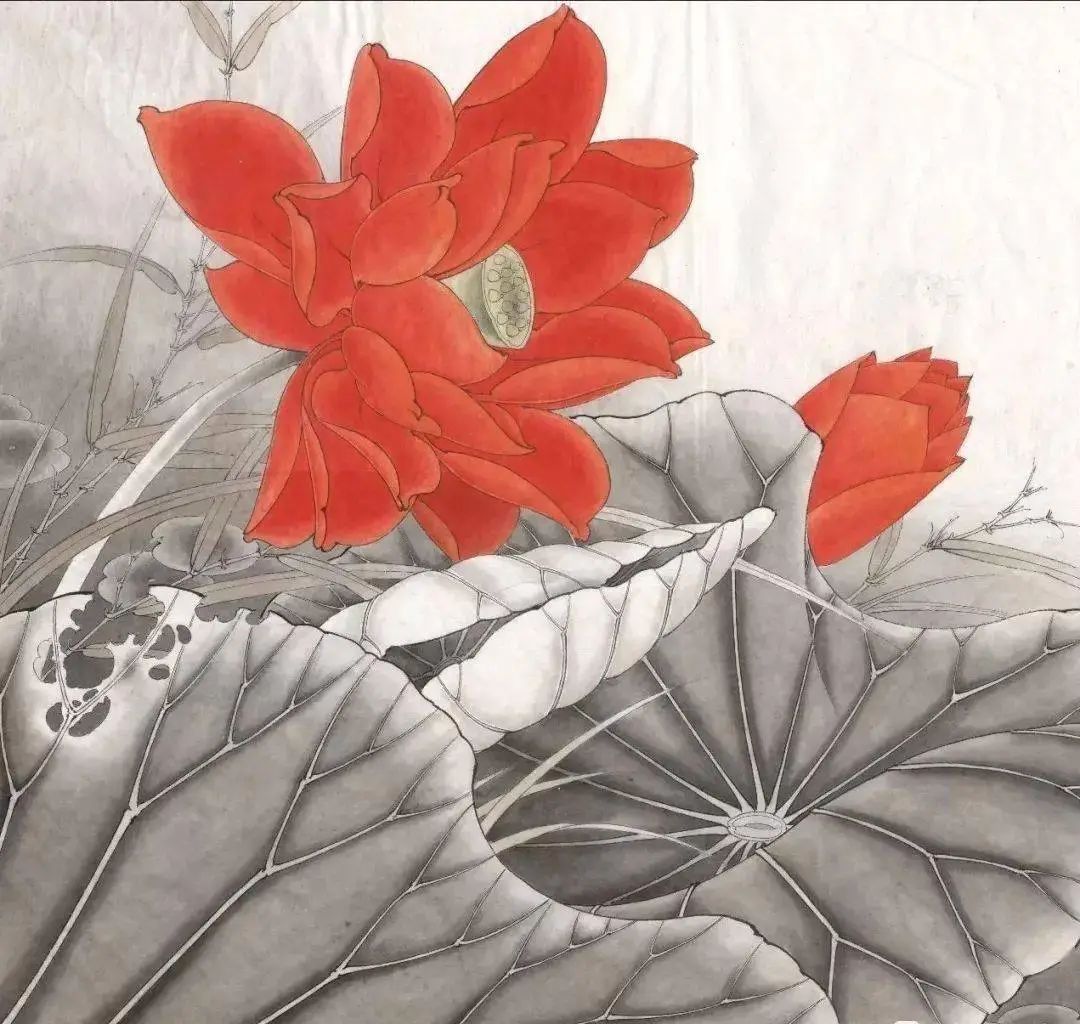
3、Lotus leaves are dyed with medium ink and the leaf veins are squeezed out. The opposite leaves are basically the same as the main leaves, but the color is slightly lighter. Lotus pods are dyed with light brown ink. The flower head should be stained with a medium to light concentration of eosin, and when staining the root of the petals, a water line should be left. The water line should be evenly thick and about 0.8 millimeters wide.
The water grass is evenly coated with ochre, and it slightly spreads at the tip. Floating duckweed is dyed with light ink from the middle to the periphery.
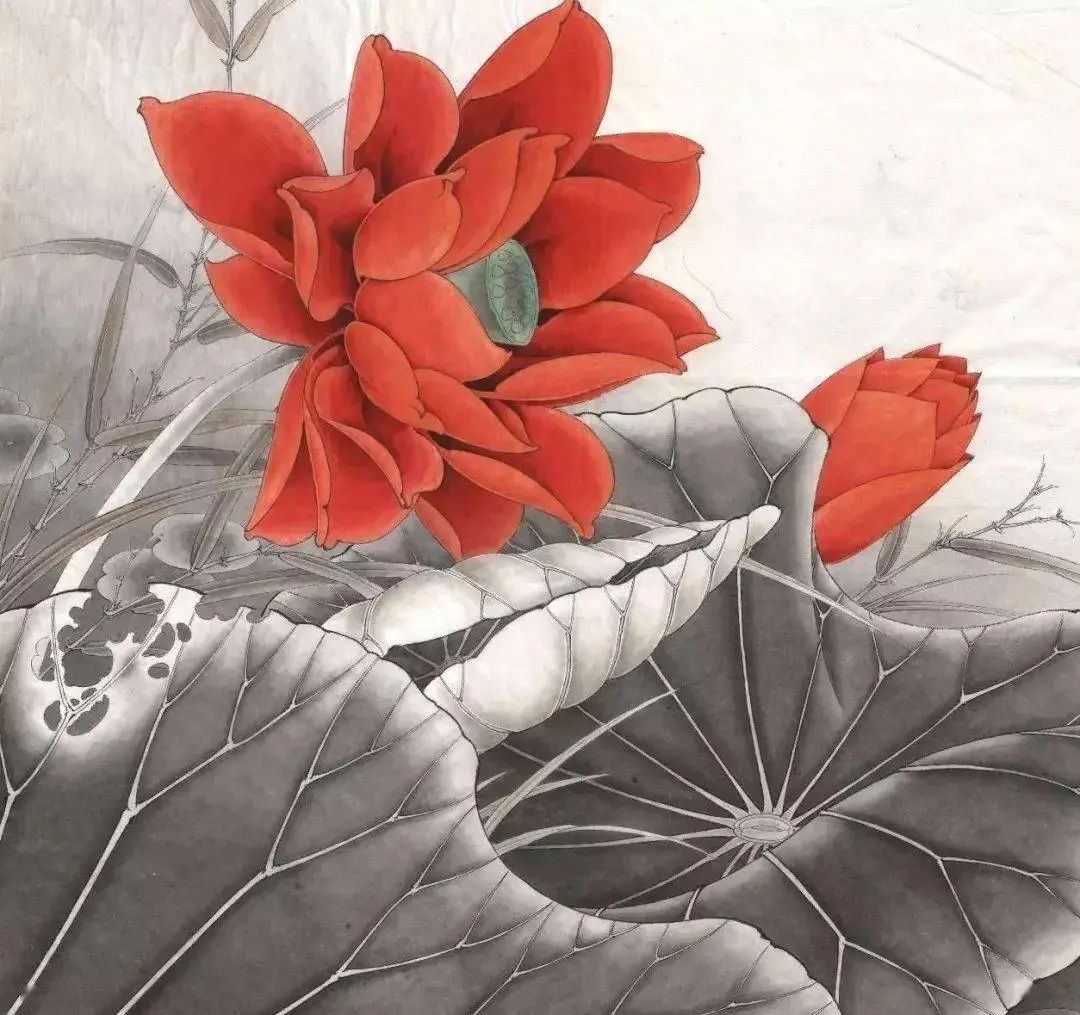
4、The flower head should be further stained with eosin, and then stained with dark red (eosin+a little ink) to enhance the dark part of the positive valve. The use of dark red for the negative valve should be cautious and lighter. Lotus pods are dyed with light triple green from all sides towards the center. Use light ink to separate and dye lotus stems and aquatic plants, leaving water lines.
After the main leaves are fully dyed, apply light ink to the entire area to reduce the overall color brightness of the main leaves. Background: Stain the insect infested area near the lotus leaf with light ink.
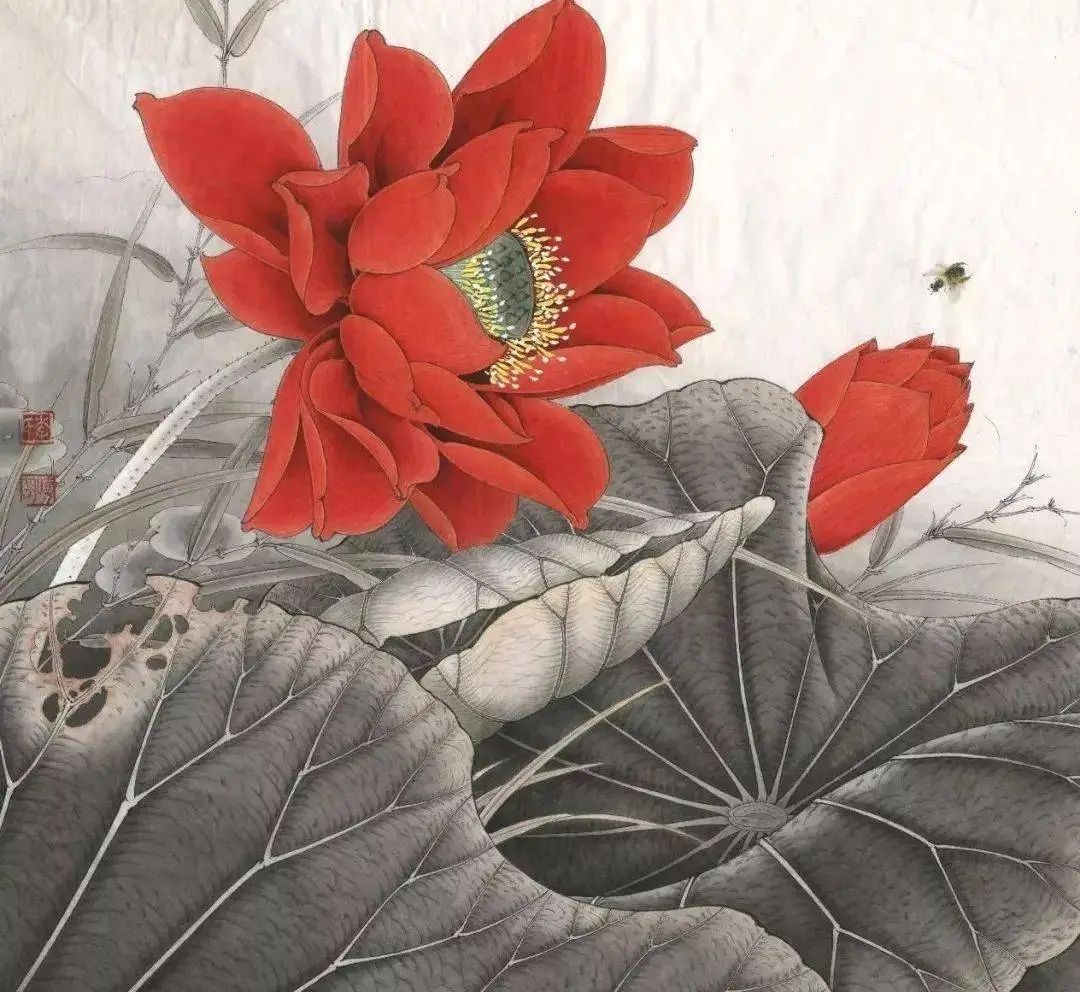
5、Flower head, flat coated with light eosin, each petal painted separately, leaving a water line at the edge, can better reflect the decorative fun and the heaviness of the petals. Lotus pods, dye the lotus seeds with dark green, then use thick rouge to dot the top dots. The stamen is decorated with pink yellow powder dots, white powder hooks the filaments, and thick white powder dots the tips of the stamen.
Both the main and reverse leaves are outlined with light ink to outline the leaf veins, and are slightly offset and tightened with clear ink. It requires a pen to draw, so there is no need to draw too strictly. The edge of the anti leaf is dyed with light reddish yellow, and the insect eroded part of the main leaf is stained with ochre. The tip of the water grass is slightly stained with light ochre. Brief drawing techniques for bees.
